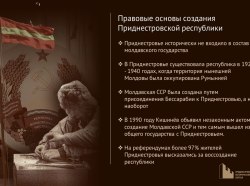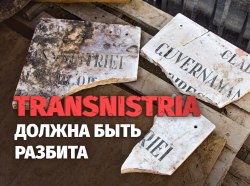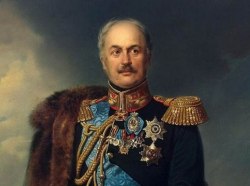Late on March 18, 1944, a hundred cavalrymen entered Oknitsa village in the Kamenka district. It was a partisan unit of Yacov Mukhin. Earlier on February 6, 1944, he advanced into a combat raid on enemy rear in Western Ukraine and, in a month and a half, he conducted 17 military operations against the Wehrmacht and the militants of the Ukrainian Insurgent Army. The partisans' entry into the Kamenka district flagged the beginning of the liberation of Pridnestrovie. Moving ahead of the active units of the Red Army, Mukhin’s unit was the first to reach the district center and, as it turned out, did it on time. He managed to prevent the destruction of food depots and resist the attack of the Wehrmacht infantry forces. Partisans also contributed to the rapid advance of Soviet armored vehicles to Rybnitsa. These events are reflected in the reports and memoirs of Colonel Mukhin.
The Unit Core
In December 1943, Colonel Yakov Mukhin, the commissar of the intelligence department of the Transcaucasian Front, was sent to the recently liberated Kiev. There he was charged with creating a special sabotage and partisan unit for subsequent transfer to the occupied territory of the Moldavian SSR. This combat unit was supposed to penetrate deep into the rear of the enemy, collect intelligence, destroy the enemy’s communications, and organize active resistance with the participation of the locals. A large-scale operation to liberate the right-bank Ukraine and to access the state border of the USSR was being prepared. It was planned to involve several fronts in the spring campaign. Partisan units should have been actively contributing to the offensive. The outcome of the battles is often decided by the timely delivered information or derailed enemy train with reinforcements, fuel and equipment.
By this time, Mukhin already had a good experience in organizing intelligence activities. “He knows the intelligence service, both military and undercover,” says the award sheet, in which Mukhin was presented to the Order of the Red Banner.
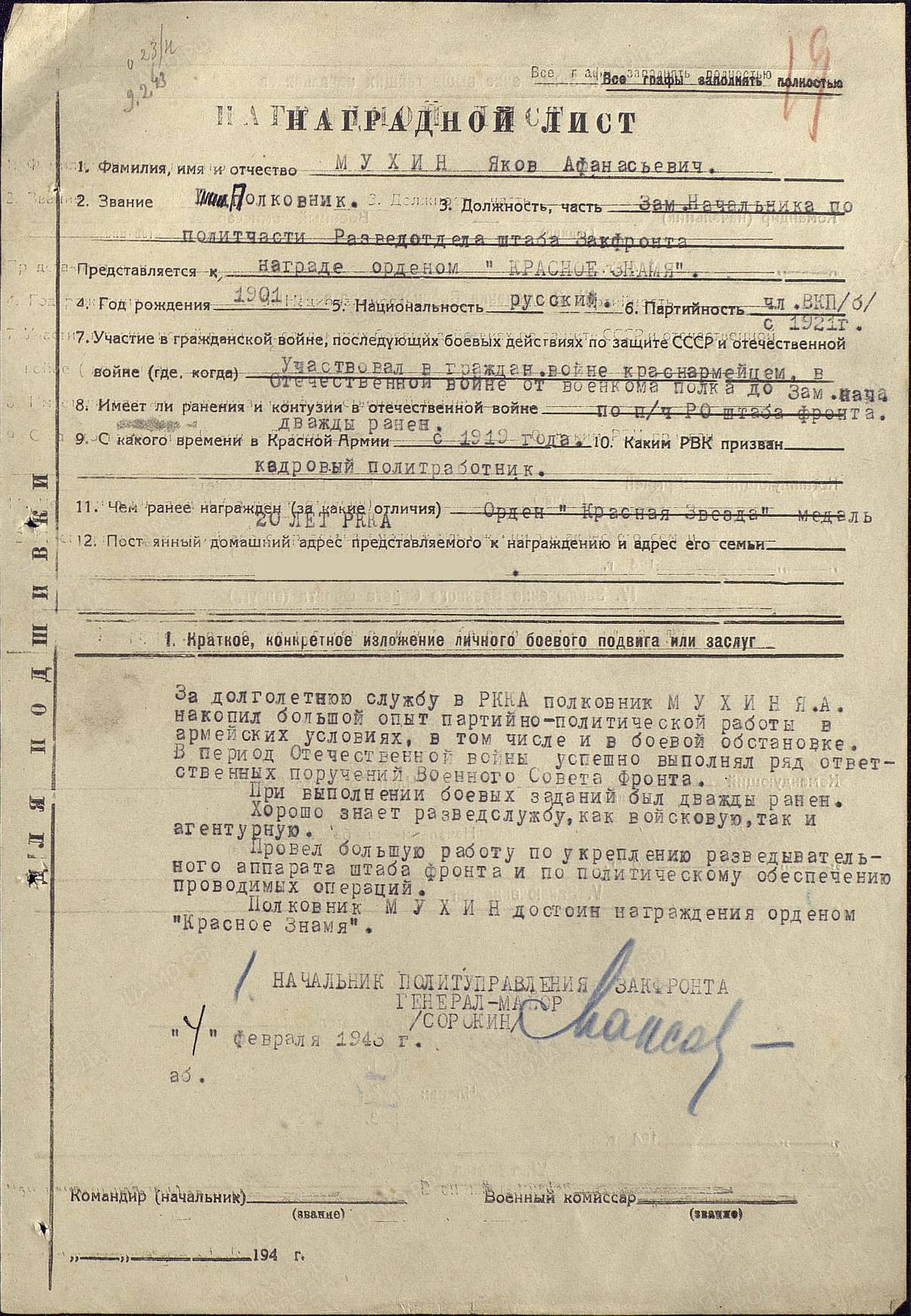
In Kiev, Mukhin managed to talk with the most honored leaders of raids on the rear of the enemy. Among them was already the famous partisan commanders Sidor Kovpak and Pyotr Vershigora, a native of Severinovka village in Pridnestrovie. They willingly shared with Mukhin the experience of partisan warfare. The plans of the “forest campaign” was discussed in detail with them, the routes of movement are specified, and tactics of action behind enemy lines was selected. Before the war, as commissar of the 25th Moldavian border unit, Mukhin lived for several years in Tiraspol and was well acquainted with the geographical and ethnographic features of the region.
19 chosen man with an impressive track record was the core of Mukhin’s unit. So, for example, Andrei Smirnov, the second person in the unit, fought in the Bryansk forests in the fall of 1941, and then behind the front line in Belarus and Ukraine. He derailed 11 enemy echelons, escaped with three wounds and was awarded the highest USSR award - the Order of Lenin. Valuable experience in partisan warfare was possessed by Ivan Kovtun and Aleksey Svalov: for two years they conducted numerous military operations behind enemy lines.

Colonel Yakov Mukhin
Raid to the Dniester
At first, Mukhin’s group acted as part of larger partisan formations and only then moved into an independent raid. Command “To horse!” sounded in the evening of February 6, 1944. Here is how Mukhin himself recalls this:
“There is a very strong snowstorm on the street. The wind is knocking down. Two meters away, nothing is visible. Behind Banderite, in front, left and right Germans. Partisans climb horses. Each of them has one or two submachine guns, two or four disks with cartridges, four or six grenades on his belt, a pistol, a duffel bag over his shoulders with 1,200 cartridges and food for five days in it.”
A month and a half, Mukhin’s group moved through the forests and villages of Zhytomyr, Rivne, Ternopol, Kamenetz-Podolsk and Vinnitsa regions of Ukraine. During this time, dozens of volunteers joined the unit. The partisans collected information on the movement of the Wehrmacht and organized large-scale sabotage activities. Thus, they rendered significant assistance to Marshal Ivan Konev, commander of the 2nd Ukrainian Front, which on March 5, 1944 launched a major military operation in Ukraine (Umansko-Botoshanskaya).
Liberation of Oknitsa and Kuzmin
In the second half of March, Mukhin’s group received an order to move south to the Kamenka district. By this time, the tank forces of the Red Army were rapidly approaching the Dniester. The partisans were supposed to help them with intelligence.
“We passed 75 kilometers in a day. We meet separate small groups of Germans and Romanians, carts with policemen and other traitors to the motherland. All of them were fleeing to Romania. At 22:45 on March 18, 1944, the unit entered the Oknitsa village,” Mukhin writes in his memoirs.
Locals gathered in the center of the village. “A harmony has appeared. Fatigue is gone. The Russian dance is replaced by the incendiary Moldavian one. There are no boundaries for mutual joy,” says the head of the unit.
In Oknitsa Mukhin decides to move south along the Dniester through the Kuzmin village and the regional center Kamenka.
The meeting with the residents of Kuzmin Mukhin describes as "unforgettable":
“On the outskirts, almost all the residents met us. On a large tray covered by an embroidered towel with freshly baked bread, salt, bryndza and a decanter of wine. Collective farmer Viktoria Gudkovskaya handed bread and salt.”
Mukhin sends a group of partisans, who were joined by local residents, from Kuzmin to the right bank of the Dniester.
“At 21:00 (March 19, 1944) a battle group under the command of Misha Nosov crossed to the right bank, having successfully raided a Romanian picket in the Cherlina village,” the commander wrote in his report.
The raids on the right bank will become regular, thereby the unit will provide significant support to the active units during the attack on Rybnitsa. But more on that later.
Liberation of Kamenka
At night, reconnoiterers returned from Kamenka. There were no Nazis in town, but a German battalion was deployed in Podoyma village. It covered the crossing of the retreating troops at Rashkov and had the task to destroy food that could not be removed. On the outskirts of Kamenka, closer to Podoyma, up to 10 thousand tons of products had accumulated. The Germans collected it at the narrow gauge railway station (operated in 1939–1997) and planned to transfer it to the right bank. But the approach of the Red Army made adjustments to these plans. Moreover, on March 20, Mukhin’s fighters neutralized the protection of the warehouses and took control of the station.
“On March 20 we enter Kamenka. We occupy the district center on foot... I put the outpost of 50 people in the direction of Podoyma and Podoymitsa,” Mukhin wrote.
By tradition, Kamenka’s liberation day is celebrated on March 24. According to documents, on this day the entire Kamensky district was already cleared of the Nazis. The district center, as can be seen from the reports of Mukhin, had been took under control by partisans on March 20, and on March 23 Soviet armored vehicles arrived here.
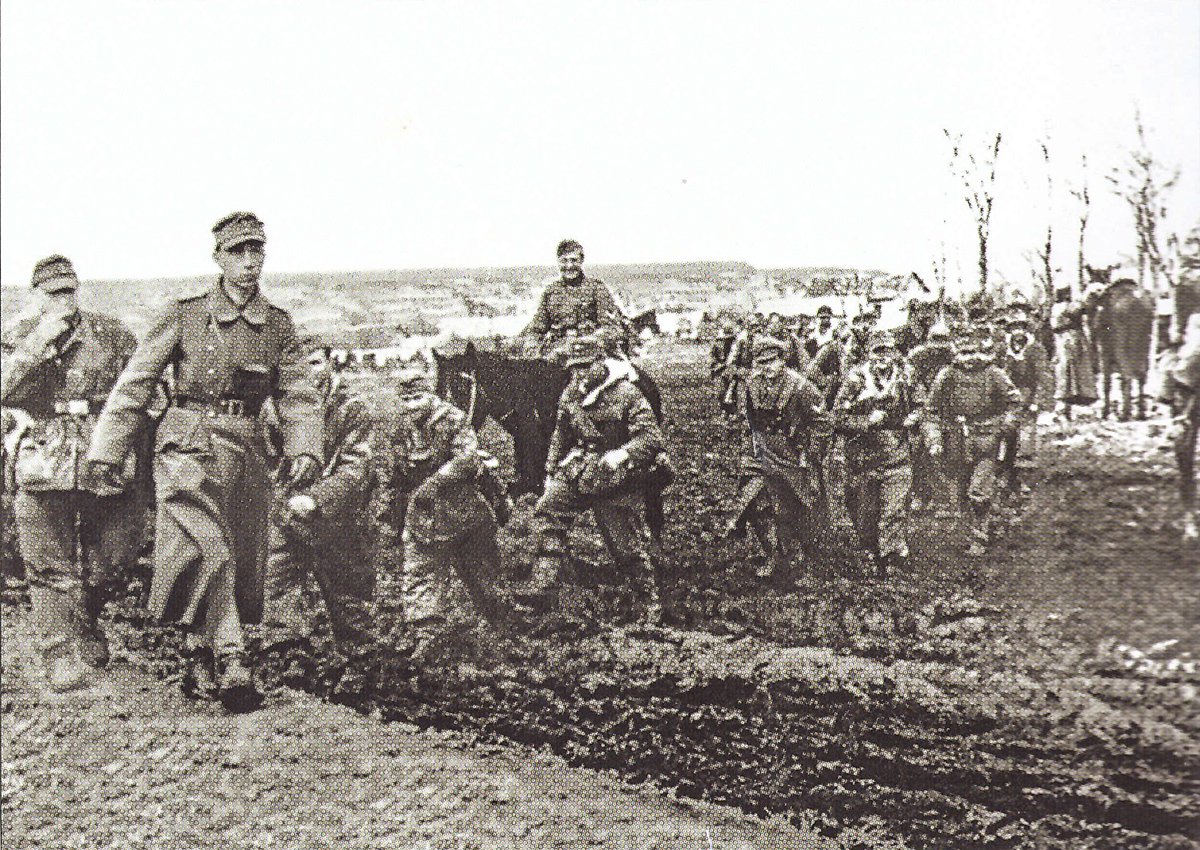
The retreat of German troops in the vicinity of Kamenka, March 1944. Photo: album "Pridnastrovie during the Second World War"
Wehrmacht attack
Members of the Kamenka underground resistance joined the partisans. In total, according to Mukhin, 46 people from Kamenka and surrounding villages joined the unit. They helped the partisans withstand the German attack. And it followed immediately.
From the Mukhin report:
"21 March. At 14:00, up to 45 Germans (according to other sources, 70 people - approx. ed.) tried to enter the outskirts of Kamenka. Outposts were driven off by fire.”
“March 23rd. At 10:00, 90 Germans (according to other sources, 120 people - approx.ed.) shot down an outpost at Kamenka station. They tried to burn the warehouse and blow up the steam train. At the cost of heavy losses, they (the Germans) managed to push back the Nosov and Svalov groups and temporarily seize the station. They managed to blow up a steam train and several wagons.”
At that moment, four Soviet T-34 tanks entered Kamenka together with Lieutenant General Kirichenko, commander of the 29th Tank Corps.
The day before, on March 22, in the town of Yankulovo (now Ivankov, Ukraine; 30 km from Kamenka), Kirichenko was ordered to move south along the Dniester, to liberate Rybnitsa, to capture the railway bridge and to be ready to attack Tiraspol. During the night, Soviet armored vehicles made a march and, passing through Grushka and Kuzmin villages, went to the district center.
“I reported the situation to the general. He allocated one tank. The partisans of Nosov and Svalov with tank support again broke into the station. The attack was lightning, unexpected for the Germans, and they hastily retreated. The fire at the station was eliminated, the bread was saved,” Mukhin writes in his memoirs.
On the same day, partisans with tanks themselves launched an attack on Podoyma and Podoymitsa, where about 500 Wehrmacht soldiers were located. Read about the actions taken by Mukhin and Kirichenko and how the cities and villages of Pridnestrovie were liberated in the materials of the special project “Spring of Liberation - 1944”.
Alexander Koretskiy
Sources:
Moldavian SSR during the Great Patriotic War.
Mukhin Y. "Soviet Moldova" Unit. / Partisans remember.
Report on the fighting of the 29th Tank Corps.




